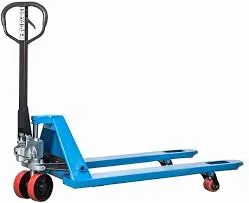


The Evolution and Importance of Mobile Pallet Trucks
In the dynamic landscape of material handling and logistics, mobile pallet trucks have emerged as essential tools for enhancing productivity and efficiency. These versatile devices play a critical role in warehouses, manufacturing facilities, and retail environments, helping organizations streamline their operations and improve safety. In this article, we will explore the evolution of mobile pallet trucks, their specific applications, and the benefits they offer to modern businesses.
The Evolution of Mobile Pallet Trucks
Mobile pallet trucks, often referred to as pallet jacks or pallet trucks, have their origins in the early 20th century when the need for efficient material handling solutions became apparent. The initial designs were simple, featuring manual hydraulic lifts and basic wheel systems. Over the decades, advancements in technology and engineering have transformed these tools into sophisticated machines that can accommodate a variety of loading and unloading tasks.
Today, mobile pallet trucks come in both manual and electric versions. Manual pallet trucks require an operator to pump the handle to raise the load, while electric models offer powered lifting and moving capabilities, significantly reducing the physical strain on workers. The introduction of electric mobility not only enhances productivity but also allows for precise maneuvering in tight spaces, making them ideal for warehouses with narrow aisles.
Applications of Mobile Pallet Trucks
Mobile pallet trucks are employed across various industries, including manufacturing, retail, and logistics. In warehouses, they are crucial for efficiently moving goods from one location to another. Workers can easily transport pallets loaded with inventory, reducing the time and effort required for manual handling. In manufacturing settings, these trucks facilitate the movement of raw materials and finished products along production lines, ensuring a seamless workflow.

In the retail sector, mobile pallet trucks simplify the process of restocking shelves and managing inventory
. Employees can quickly move large quantities of products, making it easier to maintain effective stock levels and keep shelves filled. Additionally, mobile pallet trucks are invaluable during peak seasons, such as holiday sales, when the volume of goods increases significantly.Benefits of Mobile Pallet Trucks
The adoption of mobile pallet trucks brings numerous benefits to organizations. One primary advantage is the increase in operational efficiency. With the ability to move heavy loads quickly and with minimal effort, businesses can streamline their processes and allocate labor more effectively. This not only saves time but also allows employees to focus on other critical tasks, contributing to overall productivity.
Safety is another significant benefit of using mobile pallet trucks. Manual handling of heavy items can lead to injuries and accidents, but with these trucks, the risk is minimized. Ergonomically designed handles and hydraulic lifts help reduce strain on workers, leading to a safer working environment. By investing in mobile pallet trucks, companies demonstrate their commitment to employee well-being and safety.
Furthermore, mobile pallet trucks are cost-effective solutions for businesses of all sizes. They require minimal maintenance and have a long lifespan, making them a worthwhile investment. The variety of models available means that companies can select the right type of pallet truck to meet their specific needs, from manual options for smaller operations to robust electric models for larger warehouses.
Conclusion
In conclusion, mobile pallet trucks have evolved into indispensable tools in the world of material handling. Their ability to enhance efficiency, improve safety, and offer cost-effective solutions makes them crucial for businesses across various industries. As technology continues to advance, the design and functionality of mobile pallet trucks are likely to improve further, ensuring that they remain vital components of modern logistics and supply chain management. Investing in these tools not only supports operational goals but also fosters a safer and more productive work environment, paving the way for continued growth and success in an increasingly competitive market.



